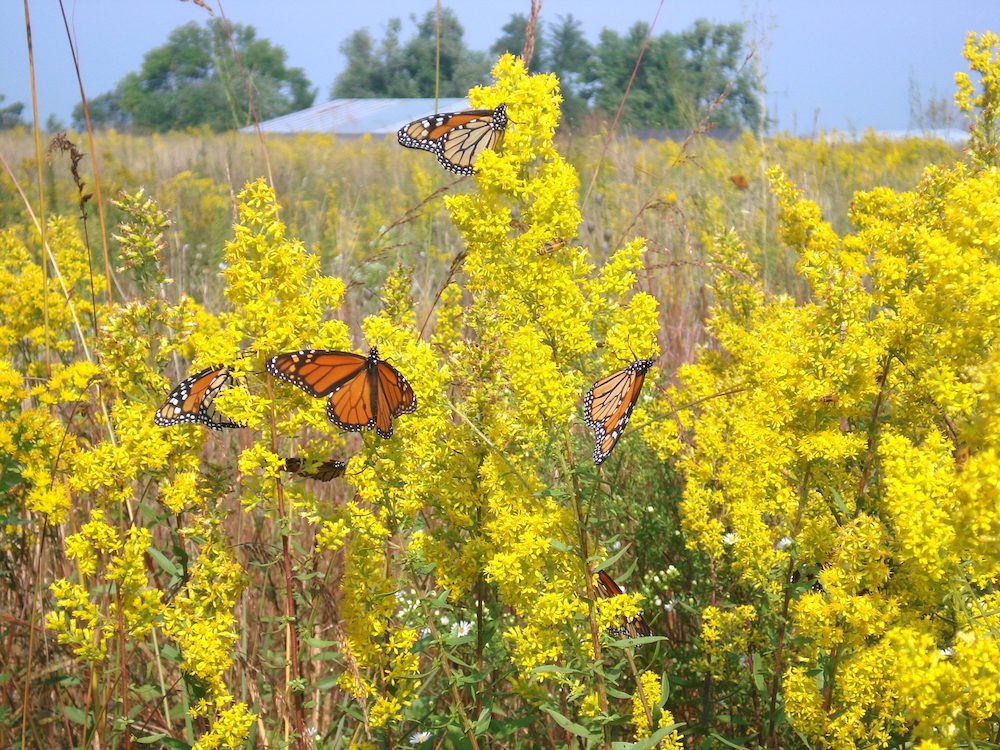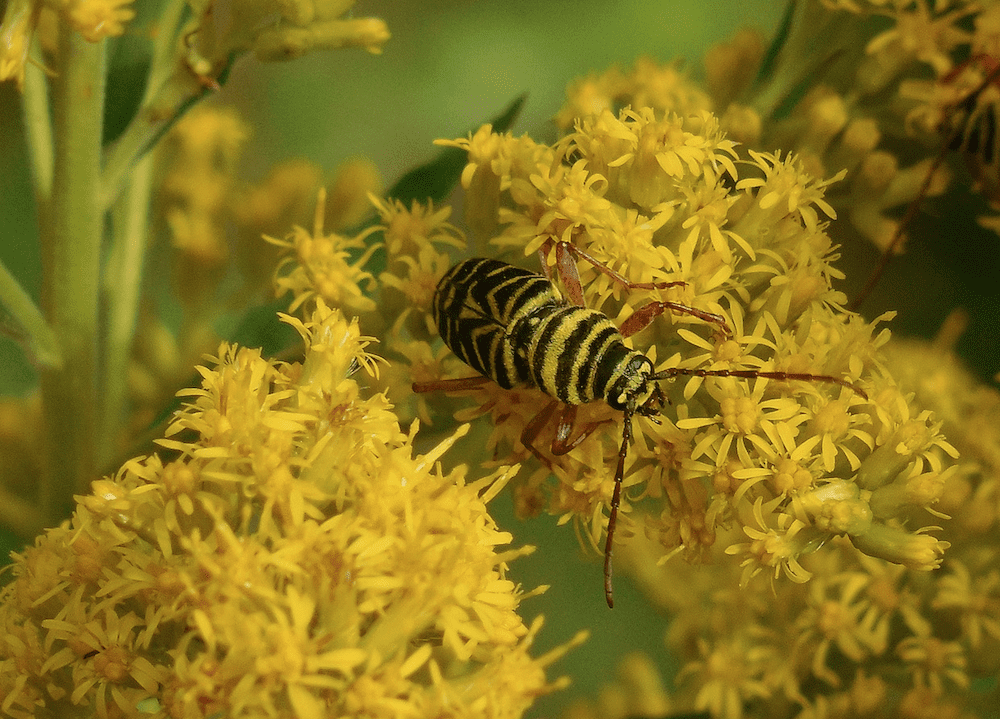August Tip? Golden Rod and Plant NOT Bad For You
By Lawrence Leaf

Golden Rod – also known as solidago – may not be a favorite for some because it is said to affect those with allergies. But I believe this is a MYTH! This flower is innocent. I’ve been planting it for decades and think it’s still worth having in your garden.
It is portrayed as the arch-villain plant causing the most hay- fever of any plant known to mankind.
A matter-of-fact GOLDEN ROD is not even listed in the top 47 worst plants for pollen allergies by Medical News Today.
The worst flowers for allergies, according to Medical News Today, are * daisies * chrysanthemums *marigolds * and sunflowers. Again not listed is Solidago.
Hearing these misconceptions about solidago repeated over and over again is disheartening when you know that this is not true.
A dependable pollinator especially for attracting honeybees to a late-season snack of pollen, these native plants are easy to plant and grow. It grows well in sunny spots or even shade. Furthermore, it tolerates all types of soils, whether dry and sandy or very moist. It can also be planted from seed and is deer resistant.
If you have a pollinator garden, using strong August pollinator plants such as Solidago/Golden Rod should be on the top of your list for its many benefits.
An important source of nectar for so many pollinators- such as butterflies and native bees- goldenrod is especially crucial to the winter survival of many honeybees. Its pollen adds considerable amounts of protein, fats, and minerals to the late-season diet of the bees. Combine Solidago to form a pollinator powerhouse with some of the other favorites like Schizachyrium scoparium, Liatris scabiosa, Physostegia virginiana, Rudbeckia hirta and Echinacea purpurea for a colorful garden that will attract more pollinators than you could imagine.

Lawrence Leaf is a master gardener with decades of experience
